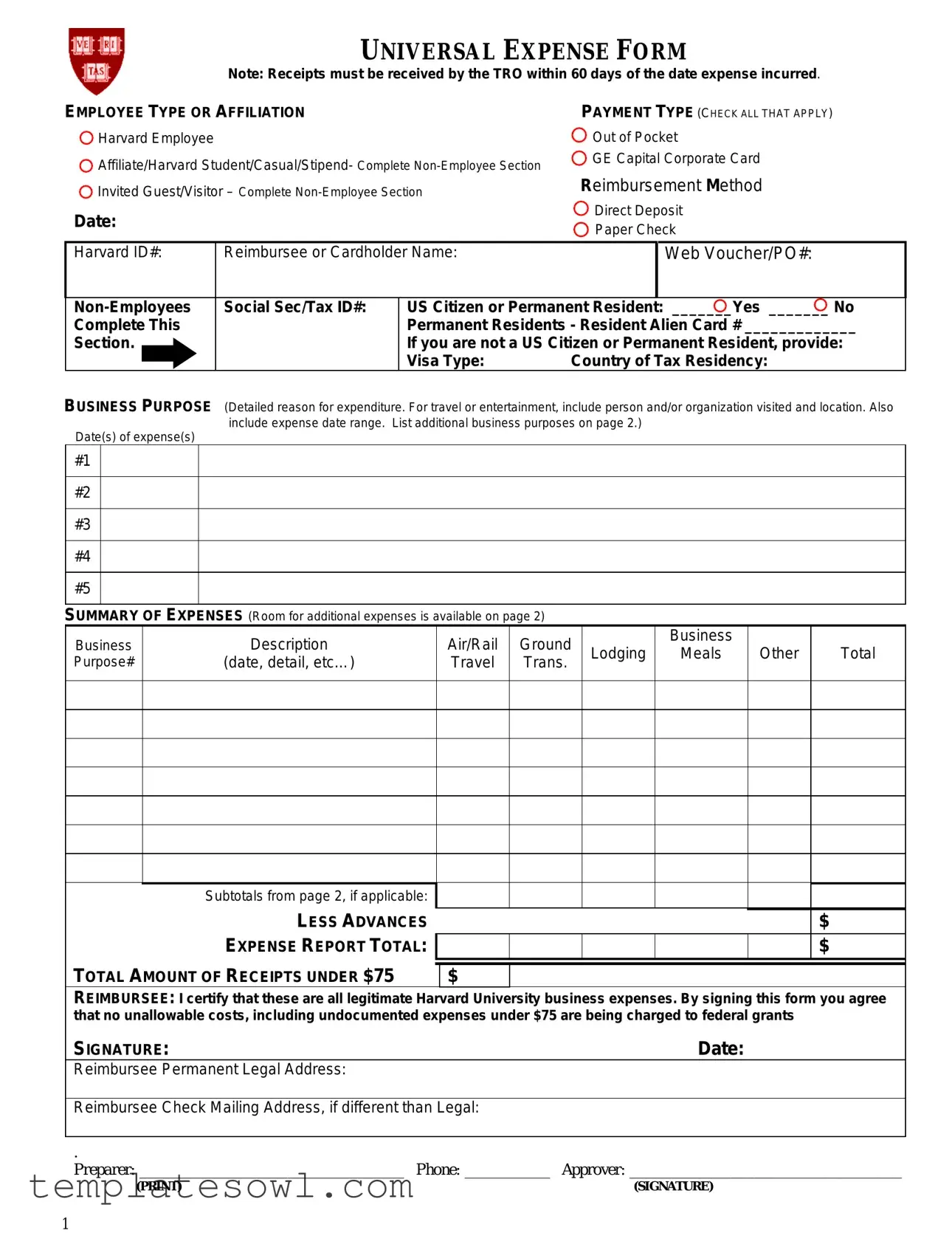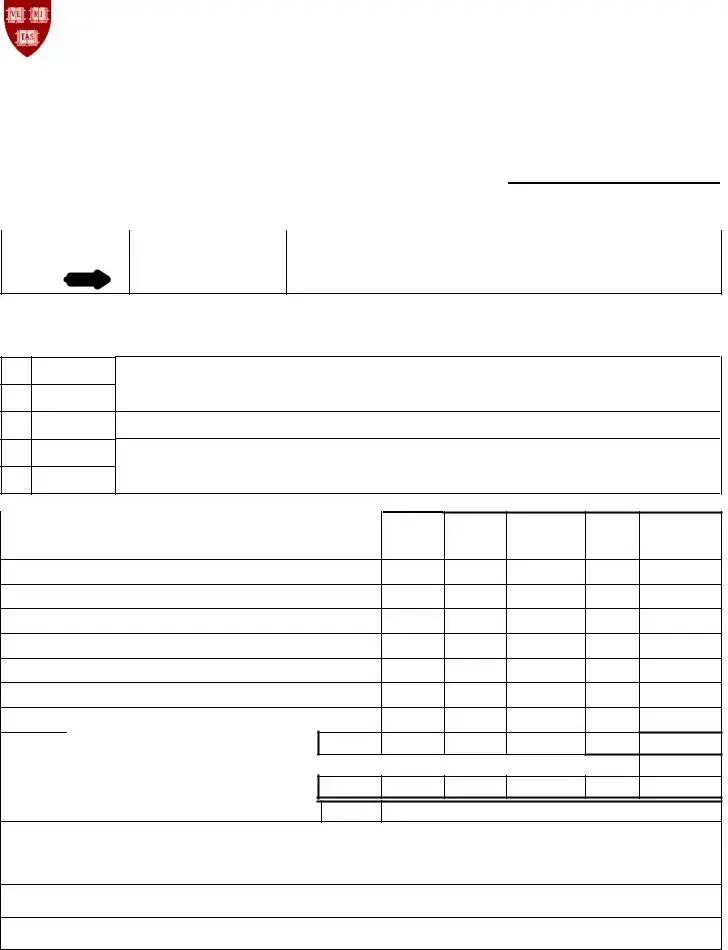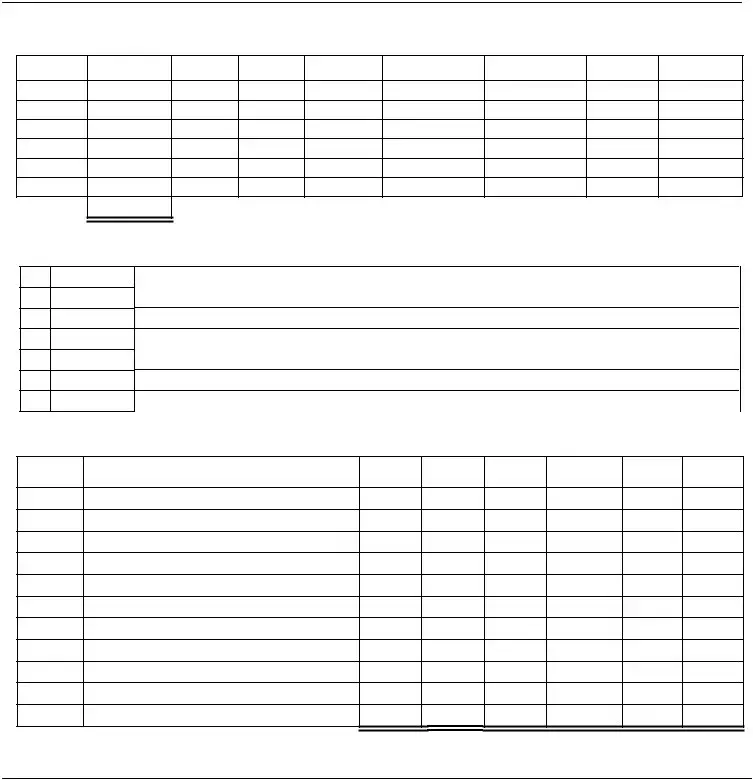Filling out the Harvard University Expense Form can be a straightforward process if you pay attention to the details. However, there are common mistakes people often make that could lead to delays or issues with reimbursement. Here are eight pitfalls to avoid.
One frequent error involves missing receipts. It’s crucial to submit receipts for all expenses, especially those over $75. If receipts are not attached, reimbursement could be significantly delayed. Always double-check that you have all necessary documentation before submission.
Another mistake is incomplete business purpose descriptions. The form requires a detailed explanation of your expenses, particularly for travel or entertainment. Simply stating “business meeting” is insufficient. Include specifics such as the date, location, and the individuals or organizations involved. This context helps justify the expense.
People often forget to include the correct payment type. Check all applicable boxes regarding how you incurred the expenses. Omitting this information can lead to confusion and processing delays. Be diligent in specifying whether the payment was made out of pocket or with a corporate card.
Incorrect signatures also pose a problem. Ensure that the right individuals sign the form. Check not only for the reimbursee's signature but also for any necessary approvals. Missing or incorrect signatures can halt the reimbursement process altogether, causing unnecessary frustrations.
Another common error is not providing a valid mailing address. If the reimbursement is to be sent via paper check, it’s vital to list your mailing address. If this information is inaccurate or omitted, your reimbursement could be sent to the wrong location, leading to additional delays.
People may also neglect to carry subtotals over correctly from additional pages of the expense report. If you list extra expenses on the supplemental information page, make sure to accurately transfer these amounts to the main form. Inaccurate totals can raise red flags during processing.
Sometimes, individuals do not indicate lesser expenses properly. According to policy, expenses under $75 don’t need detailed receipts. However, you must still itemize them correctly on the form. Incorrectly categorizing these expenses can lead to issues with compliance and processing.
Finally, some forget to follow the 60-day receipt rule. Receipts must be submitted within 60 days of incurring the expense. Missing this deadline can result in disqualification of the reimbursement request. Staying organized and mindful of deadlines will ensure smoother processing.
By avoiding these common mistakes, your experience with the Harvard University Expense Form can be much more efficient. Double-checking the details can make all the difference in getting reimbursed quickly and without hassle.


